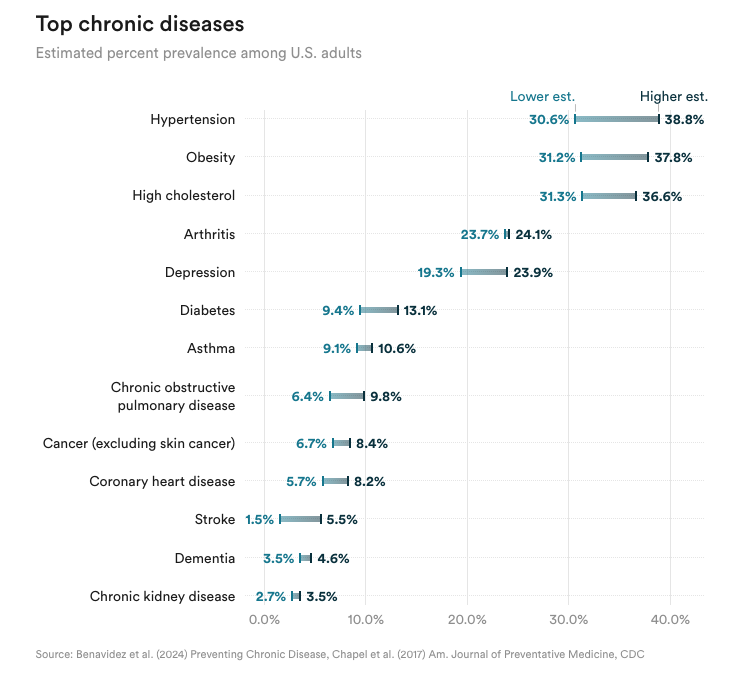chronic disease
The ongoing battle over MAHA priorities

Robert F. Kennedy Jr. has a deadline coming up. His MAHA Commission must deliver a diagnosis of the nation's epidemic of chronic disease to the White House by the end of the week. By the end of summer, it will need to offer solutions.
The stakes are high. Chronic diseases topped infectious illnesses as the leading driver of death over a century ago. But even as Americans live longer, many are spending those extra years living with chronic conditions — watching their health and quality of life deteriorate. So what's most important: taking on the leading killers like heart disease and cancer? Investigating the connection between infectious disease and chronic conditions? Cutting federal spending?
STAT's Isabella Cueto and J. Emory Parker have created an in-depth and interactive (!!!) guide to the baseline of the problem and how the commission might choose its prime concerns. Spend some time with the story.
addiction
Most youth overdose deaths driven by fentanyl alone
For years, synthetic opioids like fentanyl have driven an increase in fatal overdoses among young people in the U.S., despite the fact that youth drug use hasn't generally increased. A new study, published today in Pediatrics, examined what combinations of drugs were most common when a young person (in the study, ages 15 to 24) died from an overdose between 2018 and 2022. To the researchers' surprise, they found that deaths involving synthetic opioids alone, as opposed to in combination with other drugs like cocaine or prescription opioids, rose by 168% over those years. Synthetic opioids taken alone also had the highest rate of fatalities overall, which was true regardless of race, ethnicity, or sex.
The study authors pointed to an increased availability of counterfeit pills that contain exclusively synthetic opioids as one potential driver of this trend. They noted that youth are likely to use pills that they believe are prescription drugs, but could actually be completely synthetic. They also pointed out that harm reduction services can often have age restrictions, making it harder for young people to engage.
budgets
"The currency of the realm is fear"
On late Sunday night, Republicans on the House Budget Committee passed a reconciliation bill with more than $700 billion in federal funding cuts to Medicaid. The bill has one more stop, at the House Rules Committee, before it goes to the House floor for a vote.
Although moderate and conservative Republicans disagree over some Medicaid policies that have been considered, both factions support imposing work requirements on adults without kids or disabilities. That means the bill leans hard on that policy, applying work requirements for people up to age 64 instead of 55. Those requirements would take effect in 2029, though conservatives are demanding they start next year. Asked on Thursday if that start date was chosen to avoid angering voters before the next presidential election, Rep. Byron Donalds (R-Fla.) responded, "Man, the currency of the realm is fear." Read more.


No comments